Mastering Client Communication: 2025 Agency Guide
Master client communication in 2025. Learn proven strategies to build trust, retain clients, and grow your agency

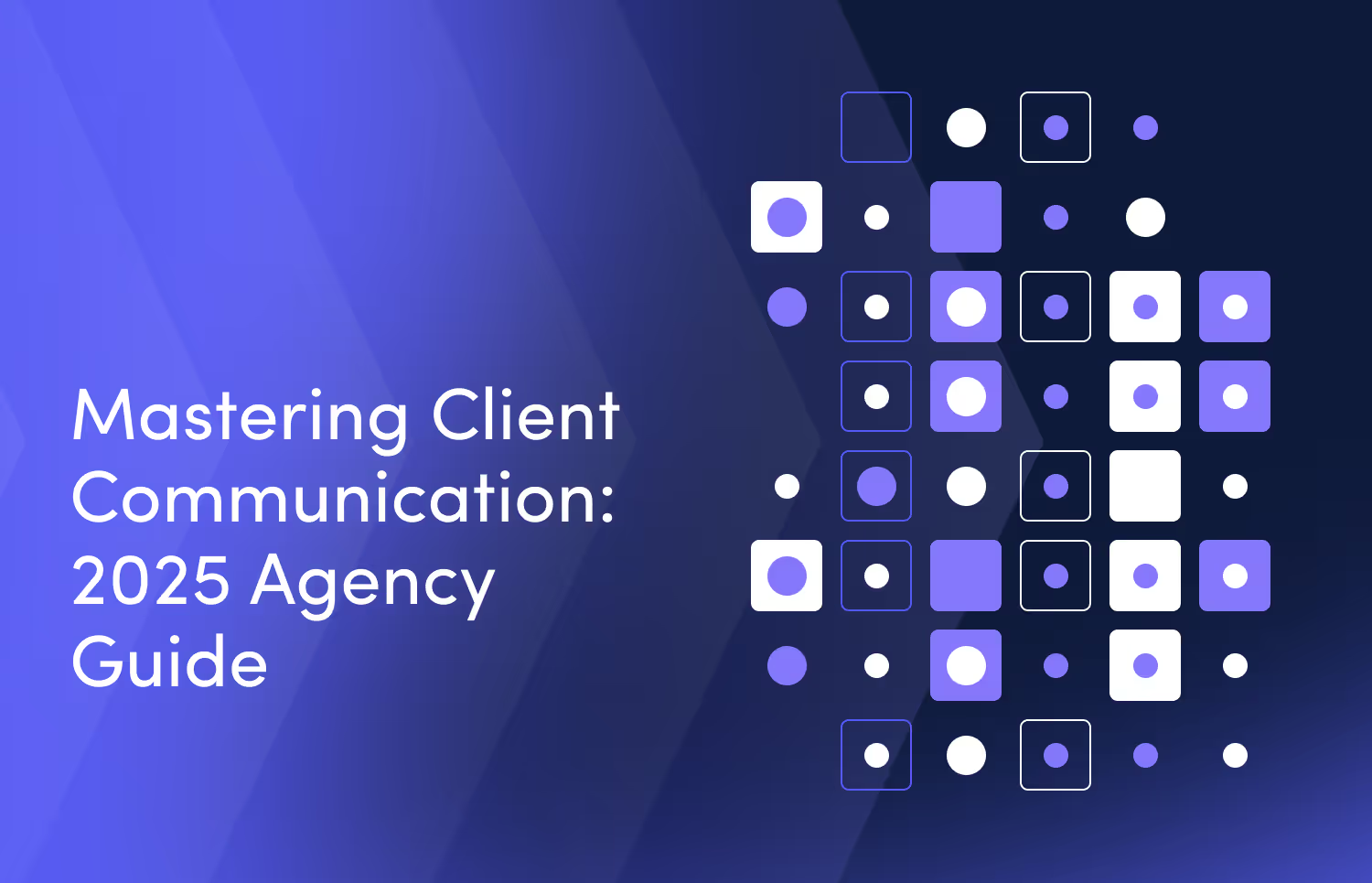


If you ask yourself what is the top thing you should focus on to grow your business, the answer is revenue. But to get revenue, you need happy clients and a happy team. And the key to this is communication.
A Project.co survey shows that 66% of people stopped dealing with a company or agency because of poor communication practices. An Axios survey also found that 72% of people left their jobs because “of how poor internal comms are.”
People want to know how you’re handling things in your agency when they work with you (clients) and when they work under you (team members). So, how do you do this? Let's start with the basics.
Effective client communication is the mutual exchange of expectations, information, and feedback between you and your clients. Your clients tell you what they expect, and you ask for detailed information to help you achieve it. In return, you tell them what they need to do (trust you, pay you early, etc.) to ensure the relationship goes smoothly and is professional.
Client communication is about expressing and aligning your thoughts with your client’s needs and concerns. This helps you show that you understand their needs and are positioned to help them.
There are basic foundations that guide communication in business. This doesn't mean you can't communicate with clients without “guiding principles”; they are merely established to help you engage with your clients more.
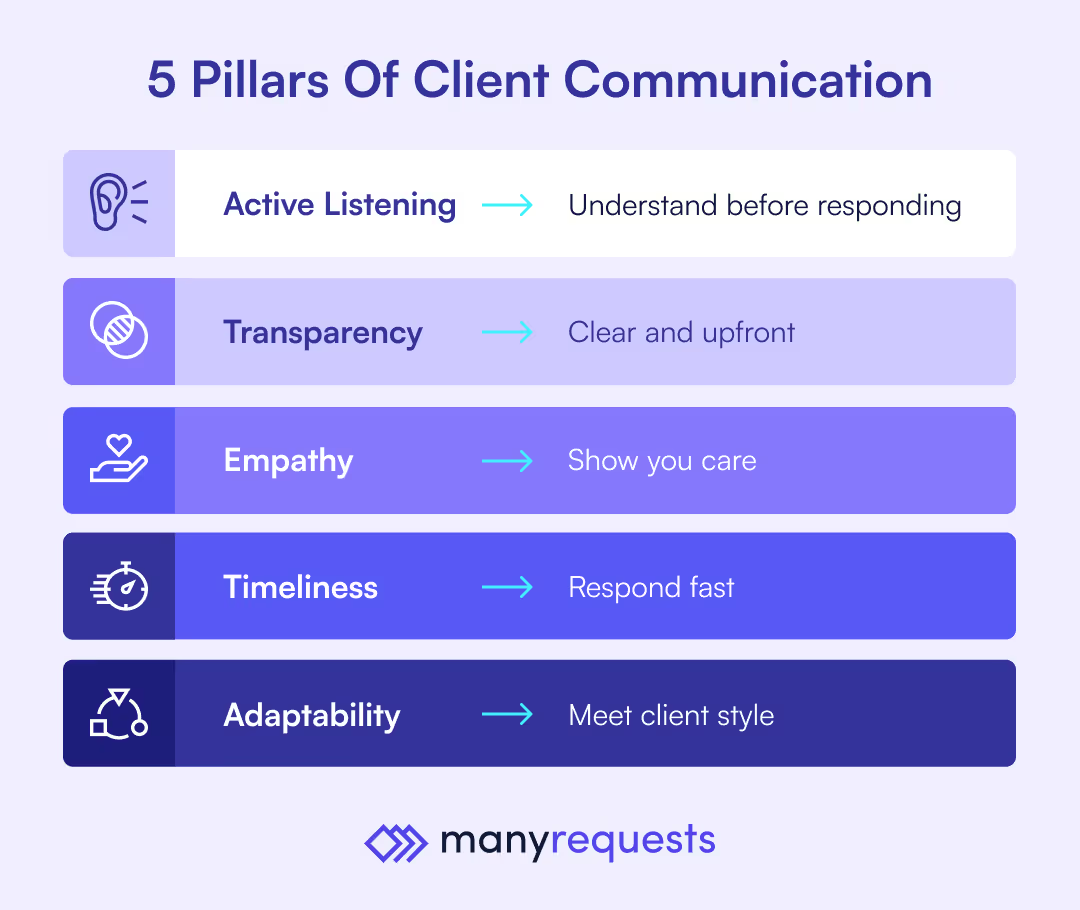
These principles are:
Listening to your clients helps you know what they need, even if they say something else. Paul Cox, founder of The Church Co agency, says that his experience in website design has helped them create specific designs for churches based on their intended outcomes.
There are times when their client says, “They want to build this, although what they really mean is they want to run an event that has this sort of outcome.”
He wouldn’t be able to know their specific need (and outcome) if he didn’t listen to them beyond the surface level: “we need this website feature and that website widget.”
For your agency, this could mean that when the client says they need a specific deliverable, asking about their intended outcome helps you know what they need to achieve that result.
In addition, listen to their ideas, validate them, and explain how you can help execute them. This puts you in their shoes, and every deliverable becomes exactly what they need to grow their business.
📌 Tip: Read this list of questions you can ask clients to help them more.
Nobody wins when there is no trust. If your clients don’t trust you, they will want to end their contract when there’s a misalignment in the deliverable or your approach to an idea they shared.
And this doesn’t suddenly happen; it’s a result of what you have done before.
To avoid this, be as transparent as possible when you communicate with them. If you made some mistakes that could affect the project, declare it upfront and be sincere about what you did and what it led to. You should also provide valid solutions to rectify the mistakes.
Also, share regular updates about their project progress. This could mean telling them things like, “Hi (client), I just want to inform you that we are still on the (project) and will send it in as scheduled. We are currently doing xyz and will definitely meet up. I will let you know if we need more time.”
It also means showing data on how you have been spending their money, especially if you’re a paid marketing agency or a PR firm working with a client’s budget. This helps them see what you’re doing to increase their trust in your strategy or process.
The difference between being a vendor and a trusted partner is how much you care about your client’s business outcomes. You can’t fake it; they’ll know if you’re not passionate about their project, which is why you shouldn’t take clients you don’t want to work with.
With that said, you need to show that you care about their goals and are positioned to help them. This means telling them how your work will help them achieve specific goals.
It also means showing them what you have done for previous clients and how you can replicate the same strategy (or a better one) to help them achieve specific business results. This is why case studies are usually important, regardless of your agency's services.
Aside from these, you can also show that you care by
Some clients need you to be almost always available. This isn’t because they are micromanagers; it’s because they report to key stakeholders who also need to be kept in the loop regularly.
So, if you have clients like this, priorirtize their emails or messages in your client portal.
Even if you don’t have clients that need immediate responses, always
"We're almost done, say 80% right now. I have added two other designers to the task to expedite final delivery within (specific timeframe)."
All these show that you value their time and you’re showing respect for it.
📌 Tip: Read this article on how to better manage your time according to 19 experts.
Clients have different needs, and you need to be able to adjust your communication styles based on their needs. This means you must recognize and match each client's preferred level of detail while working with them.
Some clients want deep feedback, while some prefer high-level feedback on the data that matters. For context, if you operate a marketing agency, some clients may not care about website traffic; they care about paid trial sign-ups and actual sales.
If you run a design agency, some clients don’t care about the volume of designs you produce. They care about your attention to detail and how it shows their brand personality to their target audience. Focus on the nuances that matter to each client; they will respect you more.
Here are some of the things you can do to manage client communication, expectations, and the professional relationship:
Karl, founder of Draft.dev, a technical content marketing agency, tells every new client, “Things take a lot longer to produce, but that said, the quality is very good…the technical ability of these people (his team of software engineers and writers) is really good.”
To him, this is a trade-off because companies with software developers as their target market pay a lot for quality content from writers with domain expertise, which Draft.dev offers. As long as he sets expectations, there are no surprises when they start working with him.
So, how do you do this at your agency? Make what you do and how you do it clear as they go through the sales process.
For example, let them know:
You can communicate expectations through the following:
55Knots, a graphic design subscription service in Australia, created a “Work Scope” page to show clients a checklist of their services.
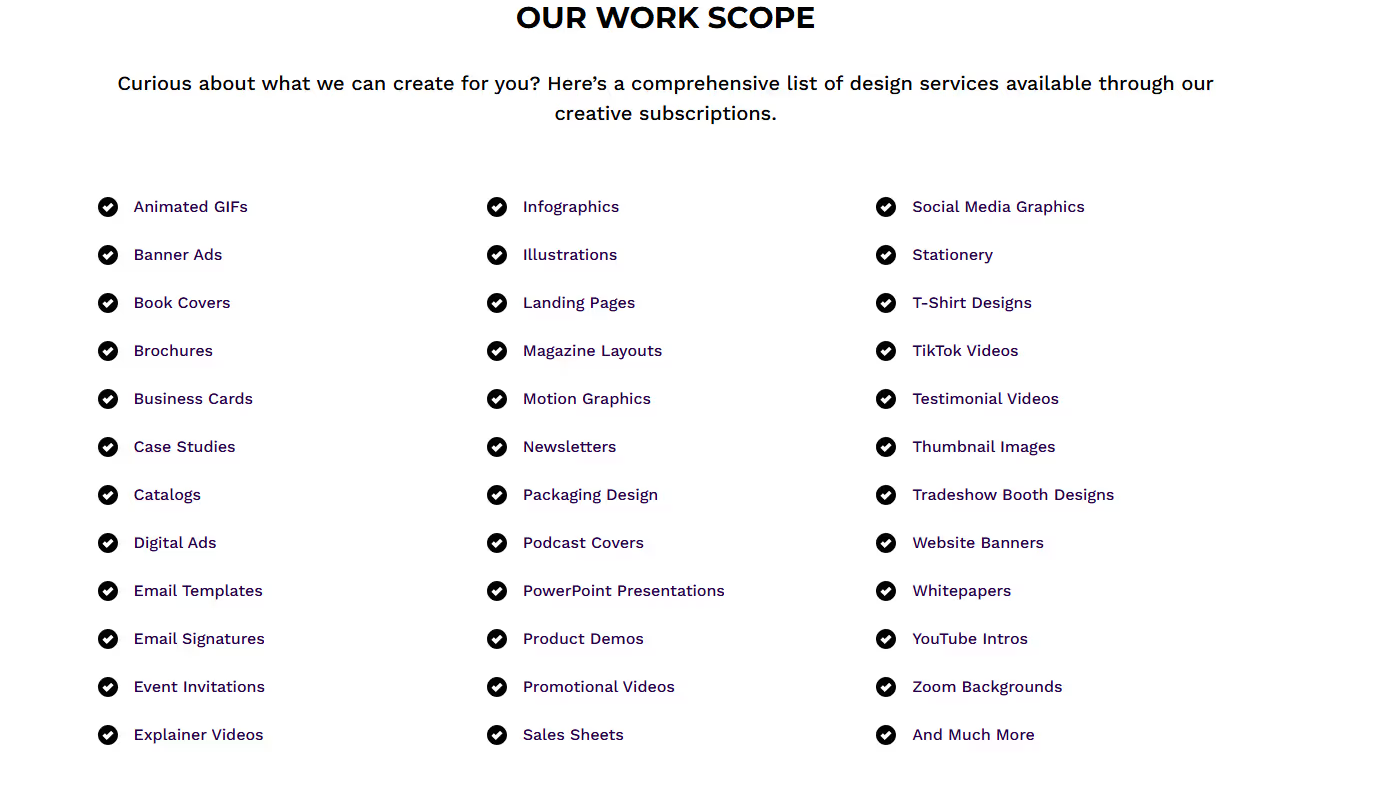
When you head to their pricing page, you’ll see these services packaged into different categories to help clients decide based on their design needs.
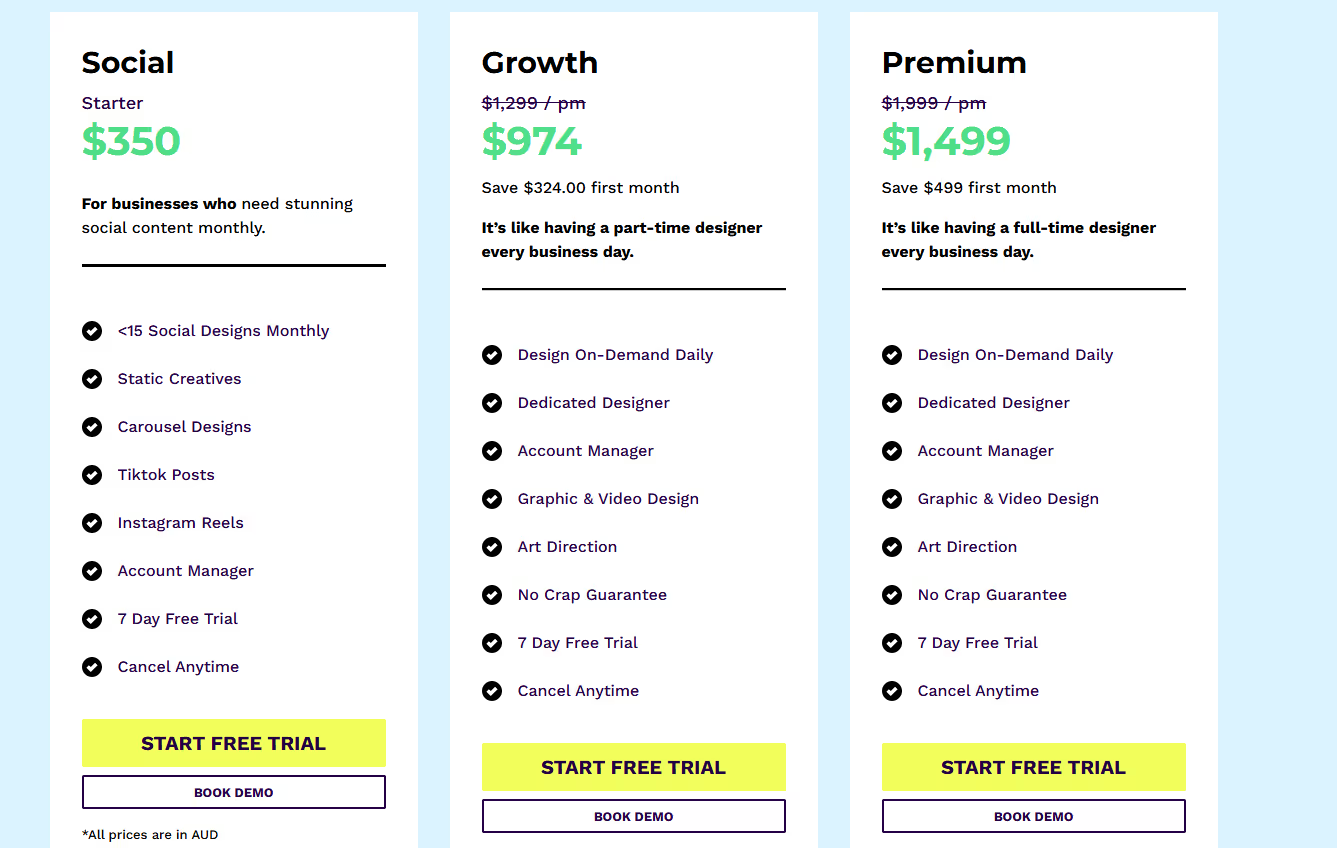
Why does this matter?
Customers know exactly what to expect upfront before speaking to you or even paying for a “subscription.”
You can also include a checklist you don’t offer if you like. If clients ask for these services, you can refer them to partner agencies, but having them on your Work Scope page communicates them faster.
A FAQ page helps prospective clients qualify or disqualify themselves; it helps them know whether your service is for them or not. It also reduces the volume of calls from prospects asking about the services you offer and those you don’t. Here’s an example from an agency:
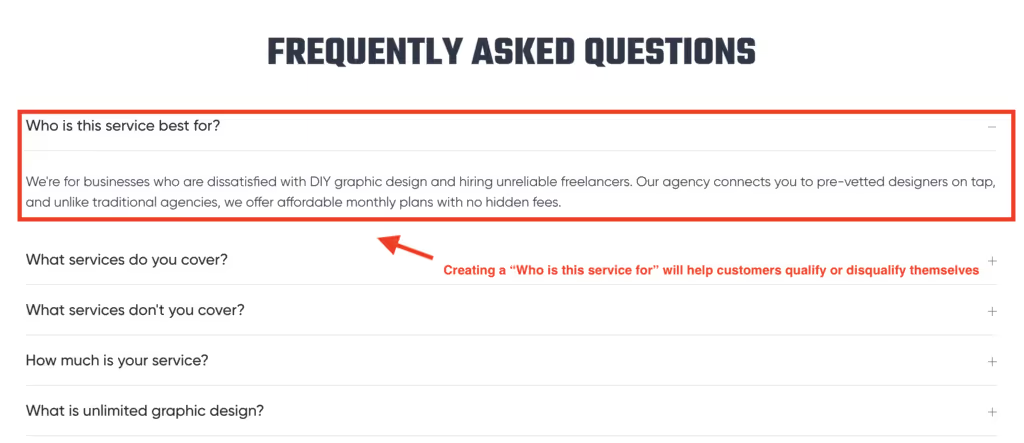
You can also include the kind of companies you work with on your FAQs page. Here’s Animalz showing who they work with, which excludes local businesses, retail companies, and others.
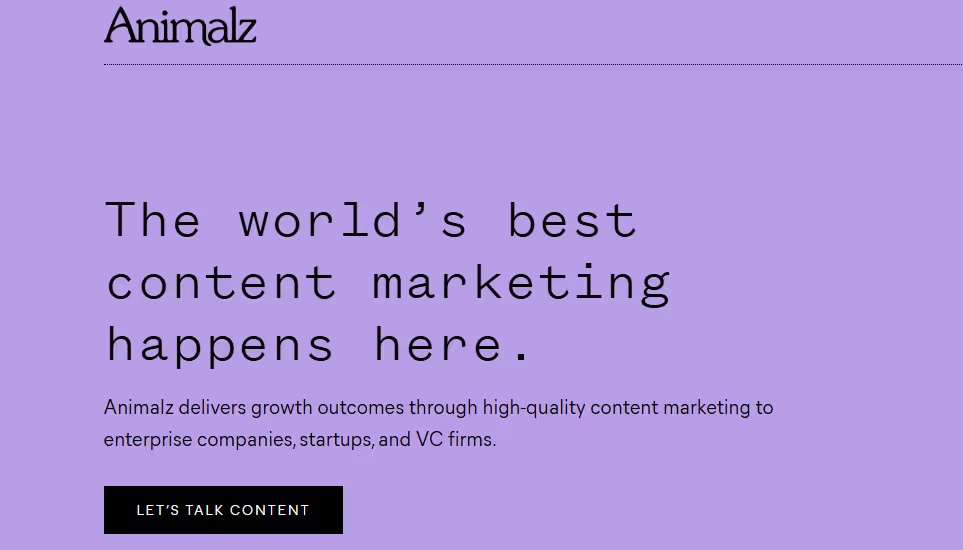
A FAQ page communicates everything they need to know before they contact or work with you.
A “How it works” section shows prospects how they’ll go from “welcome to my agency” to submitting the first brief, how they’ll manage tasks and monitor projects, when they will receive their deliverable, and when you expect feedback.
Here’s an example from 55Knots:
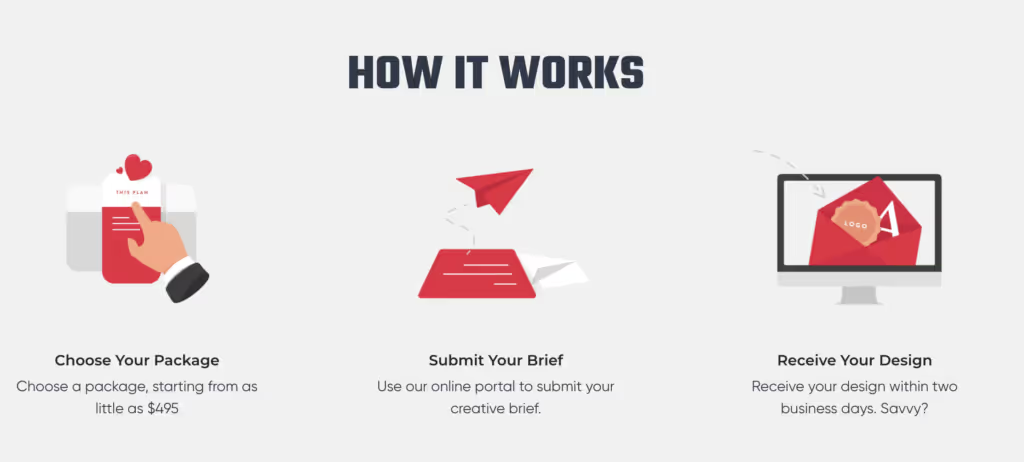
Explaining this process helps them understand your workflow even before they start working with you. This way, you won’t have to worry about bending your rules because they already understand your process.
The people at The Church Co do this; the image below shows the average turnaround time based on a client's package: 3 weeks, 1 week, 2 weeks, and 4 weeks.
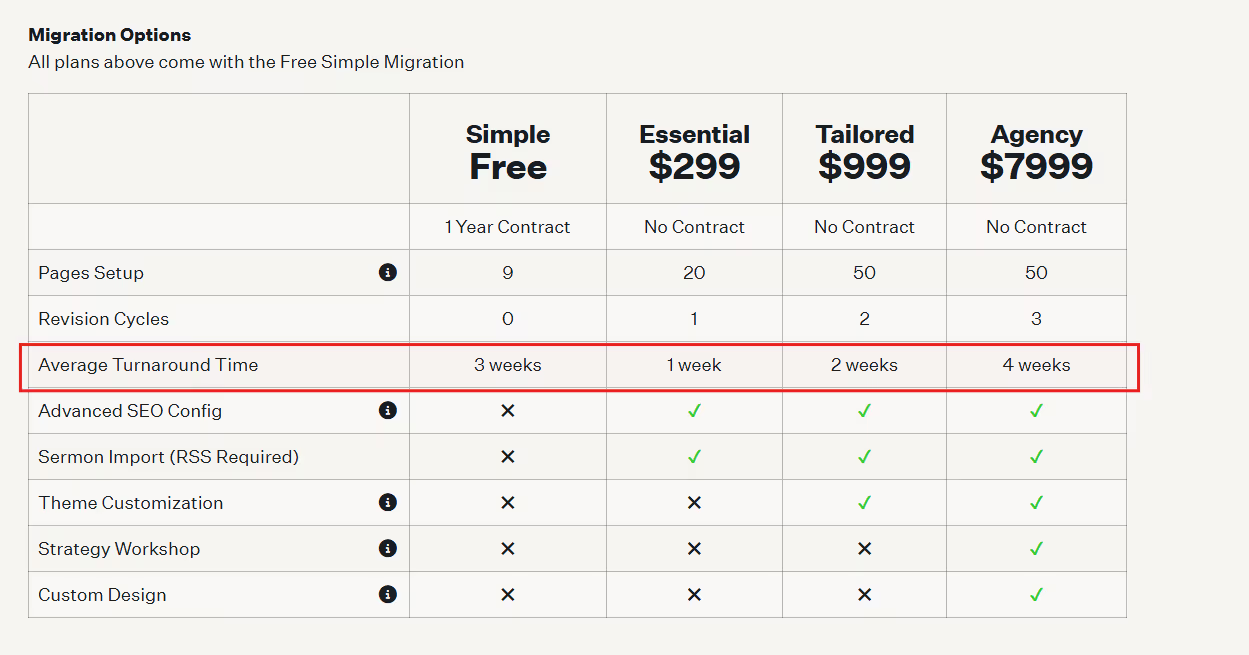
📌 Pro tip: You can also add expected timelines for each step.
For example, if it will take 24 hours to review the brief and ask relevant questions, mention it. If it takes X days to complete a specific task, mention it. It gives the client a potential deadline for the project. If it will help, ask for their time zone so that you can submit it before the end of working hours.
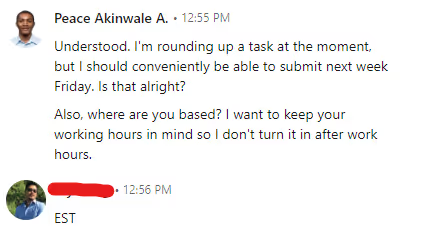
Your clients want to know the next steps when they say Yes to you. So, after signing contracts and you’re aligned on the pricing, what's next?
Here are a few things your client onboarding can cover:

Then attach an intake form to collect details about the project. It can look like this:
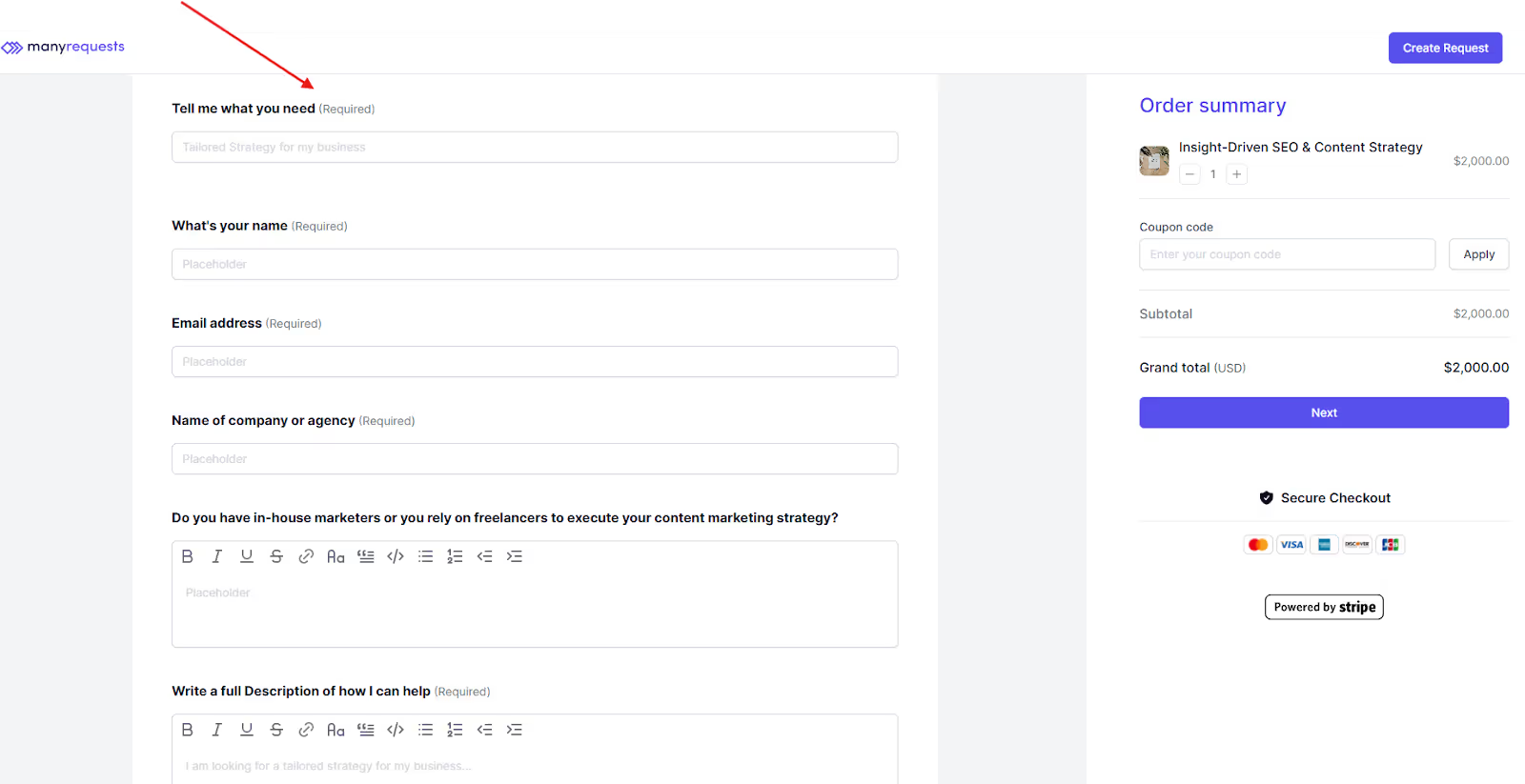
📌 Tip: Clients can pay for your services upfront (if you want) through Stripe's integrated billing feature. This way, clients can review your service details and pay directly before (or after) sending their project brief. You can create one-off or recurring services, and clients can be billed how you want (50% upfront and 50% at completion). Use these 7 tips to ensure you get paid.
In the image below, 55Knots uses the ManyRequests client portal to onboard its clients. This is exactly what new clients will see.
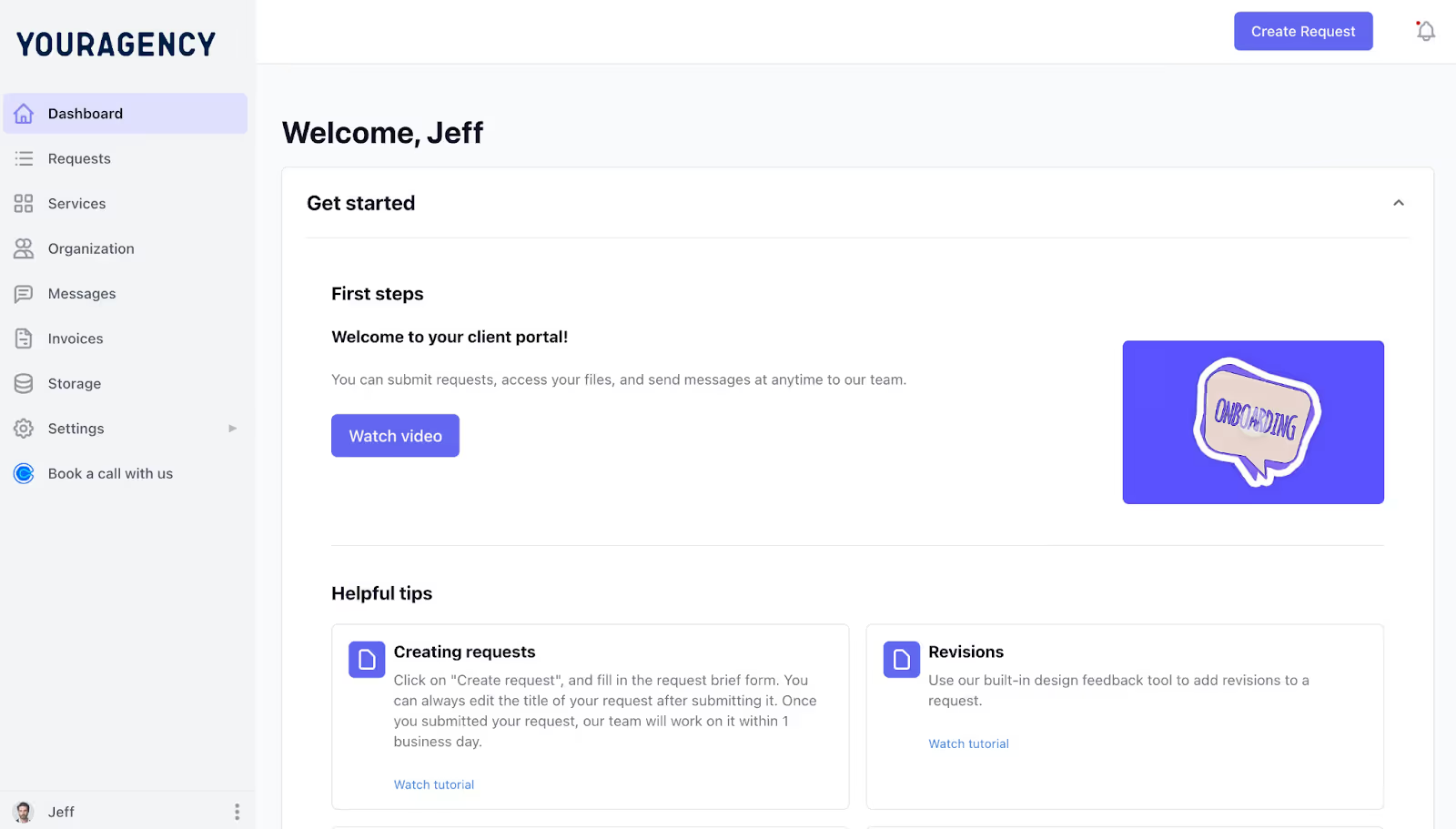
You can also provide a better onboarding experience by using an onboarding document to communicate:
You can also send welcome emails like the account manager in the image below did. The goal is to help the client decide what to do next, especially if the client is waiting on you to communicate how to proceed.
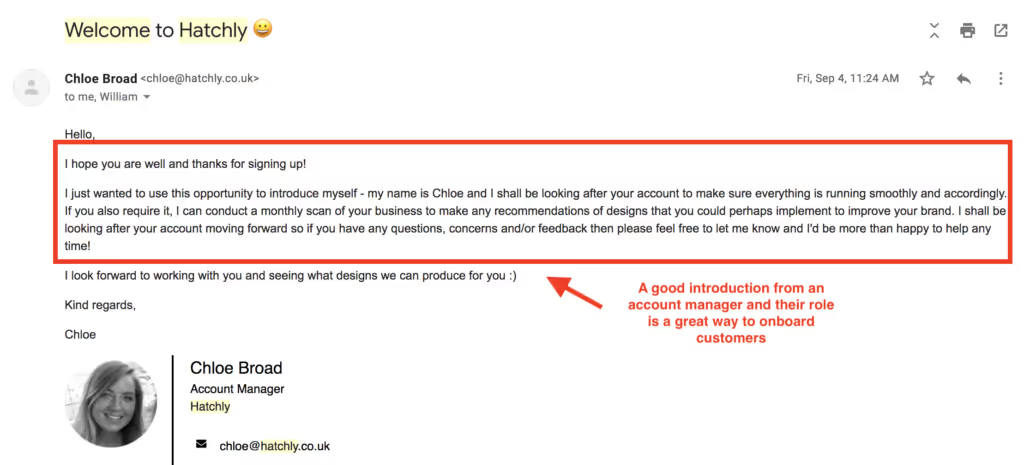
📌 Pro tip: Use this onboarding checklist template to properly onboard new clients.
Communicate the next steps with your client every time. And if you need to create a communication plan for this, do. It helps you document what is required at each step of the client's journey to improve service delivery. This includes having a document about:
Do you tell them in advance that there may be a delay due to the complexity of the project?
Here are a few tips to set up a successful client communication plan:
Here’s what 55Knots do when clients submit their requests:
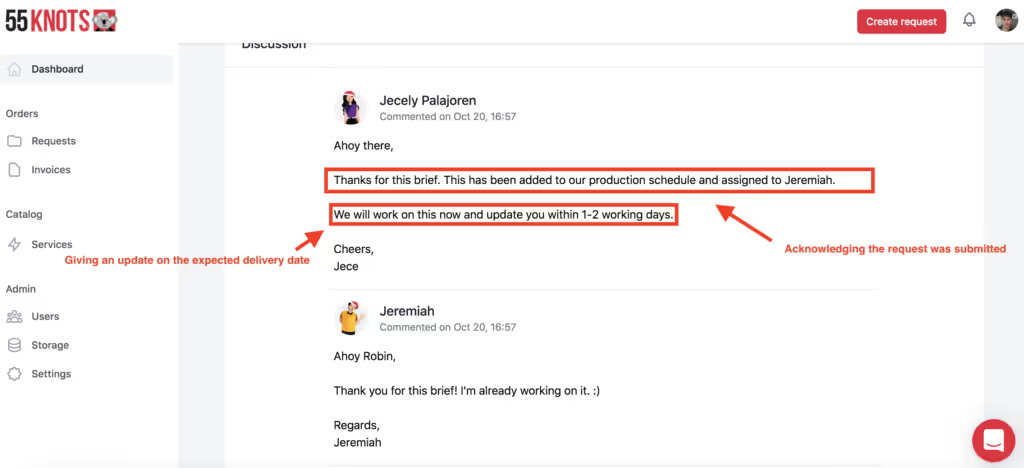
Here, the project manager acknowledges the request and says it has been assigned to Jeremiah.
In the second split of the image, Jeremiah acknowledges the task and says he’s working on it.
📌 Pro tip: Use ManyRequest to auto-assign requests to a specific team member or account manager. This saves you time from manually assigning requests. Simply tag the assignee, as seen in the image below, and they will receive an email about the new request assigned to them

If you don’t want your clients to see any information about the assignee, you can make that change through your client portal settings.
In the highlighted screenshot below, my clients can’t “See requests assignment info,” which means they can’t see the assignee in charge of their tasks.
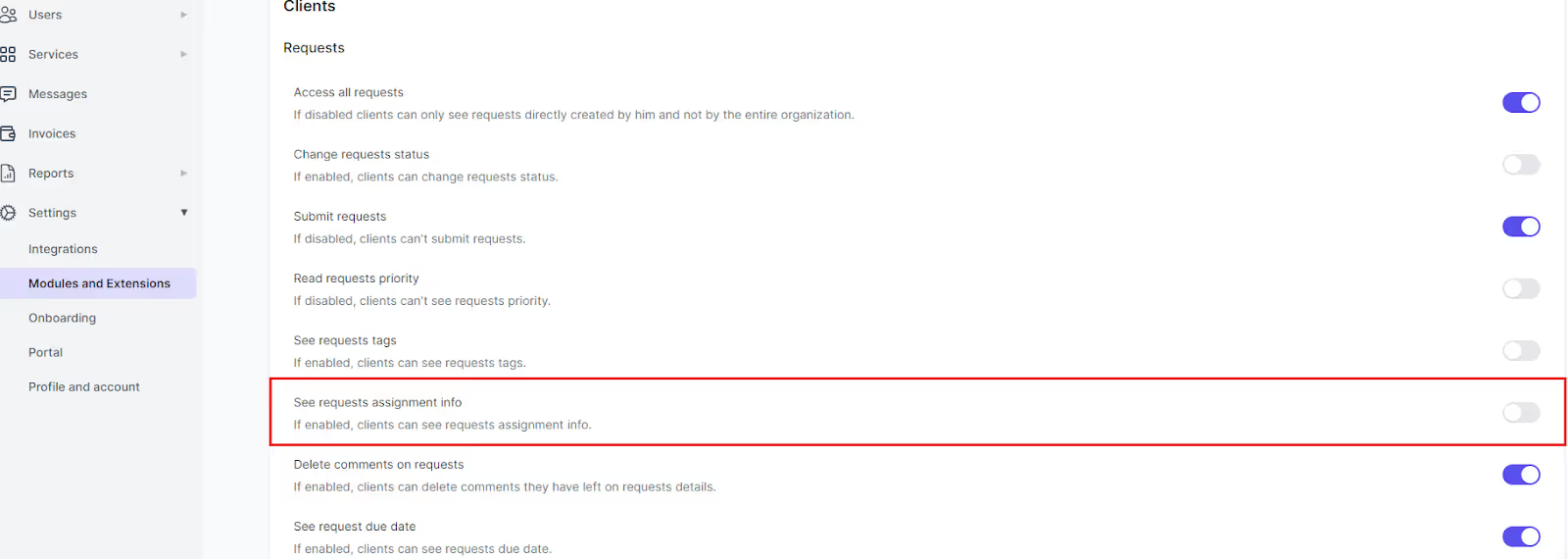
There are other settings here that I can activate or deactivate based on my interest.
Don’t hesitate to ask questions when you need clarification. If a client submits a brief and a file is missing, there is incoherence, or some information is unclear to you or your team, tell the client as soon as possible. This is why it is best practice to go through the brief within 24 hours after receiving it.
Clients hate surprises. It’s okay to experience issues that may affect a deliverable in a way you didn’t expect. A team member can take a sick day off while others are stretched too thin.
That happens, and you should let your client know there may be delays in getting the final deliverable. Tell them why, and they will understand.
Communicating with your team is as important as client communication. Everyone must take responsibility for something and know what they’re responsible for.
For example, if you are a large team, you can decide on issues like:
In addition to having this in place, use weekly check-ins to hold your team accountable and listen to their feedback. This can be the best time to learn about their worries, what they think you can do better, or how they feel about something.
This is important because your agency needs happy team members. In a survey of over 120,000 employees in 140 countries, 20% of workers are lonely, angry, or sad, and 41% are stressed.
Your team can’t help you fulfill your desire to meet client needs if they’re unsatisfied at work. What can you do?
📌 Pro tip: Read this article on workload management to know how to better relieve your team when necessary.
Kordy, from Wrkpod, an agency that helps companies hire talent and work from their remote offices, calls some of his clients every month and says:
“Hey, how’s it going? What challenges do you have with your team (and how can I help)?”
He does this to know how he can add value to his clients every month. For you, this could mean asking them how they feel about a deliverable or whether they’re satisfied with how your team handled their tasks.
It could also mean asking if your client has other services they feel you might be positioned to help them with.
Investing in customer success is about anticipating what they need and showing readiness to help. This helps you find clients who (1) treat you like a partner, (2) you can upsell with other services, and (3) show you an opportunity to help them more.
This also helps you increase your chances of retaining them as long-term clients.
Aside from regular monthly calls, you can create resources to teach customers how to be successful with your service or inspire them to use it.
You can create blog posts, send regular emails, create free courses, etc., about effective strategies for something in your industry and how clients can use the strategy to achieve what they want. This is why SEO agencies create blog posts, and an agency like Siege Media takes it a step further with YouTube videos:

It’s also why some agencies create newsletters. Here, they publish recent strategies that achieve results for companies, and your clients can decide to opt for them for their marketing needs.
Clear expectations, transparency, and proactive customer success are key to client satisfaction and retention. You can manage these key elements in one place with ManyRequests – where you can track client requests, assign tasks to team members, and maintain professional communication through a branded portal. Sign up for a 14-day free trial to explore the features and see how it can help scale your agency’s operations.
Originally Published: December 02, 2020